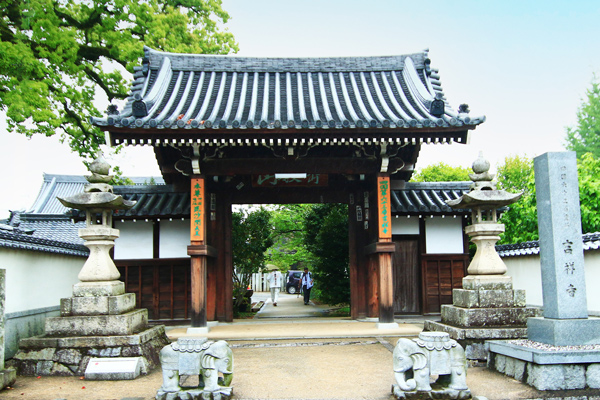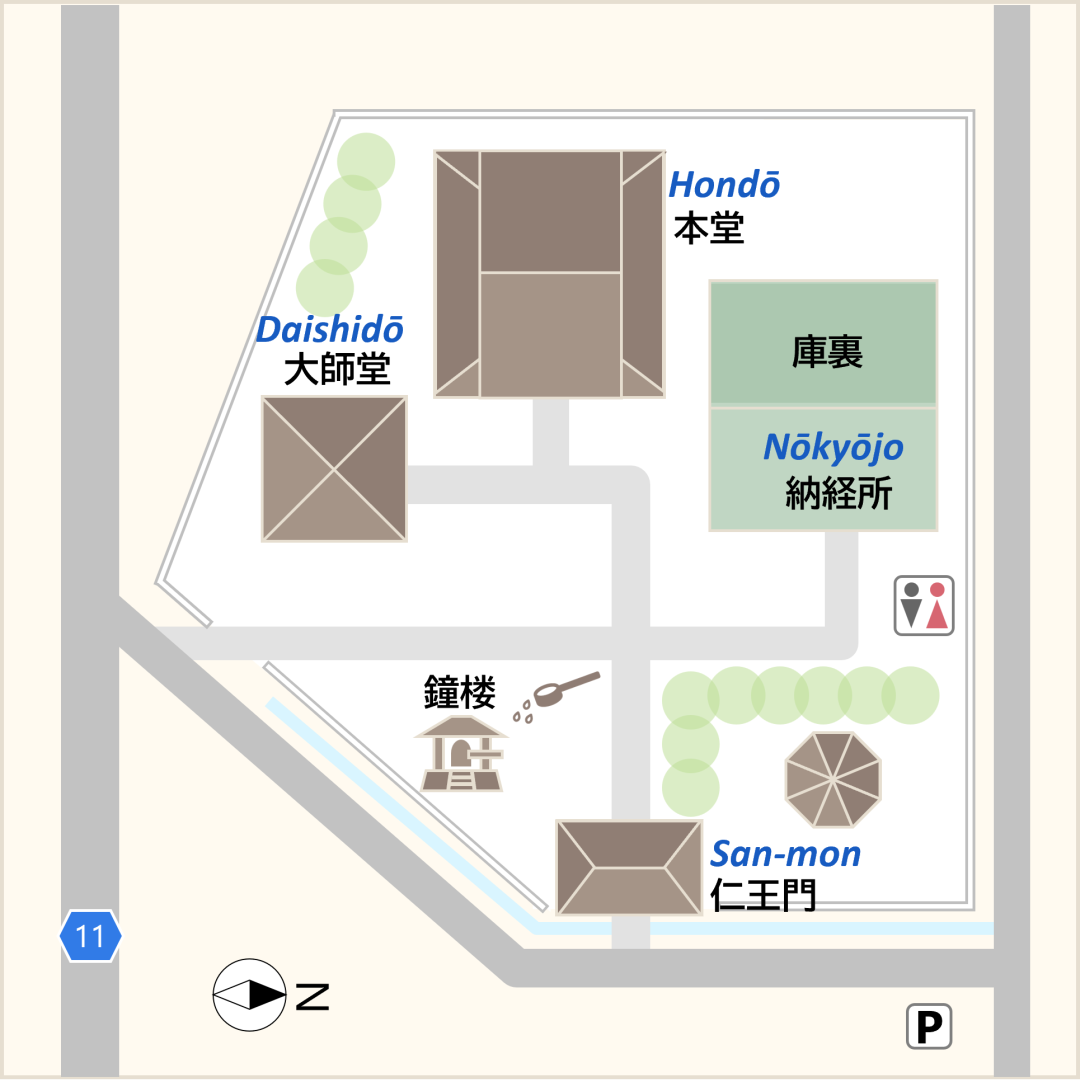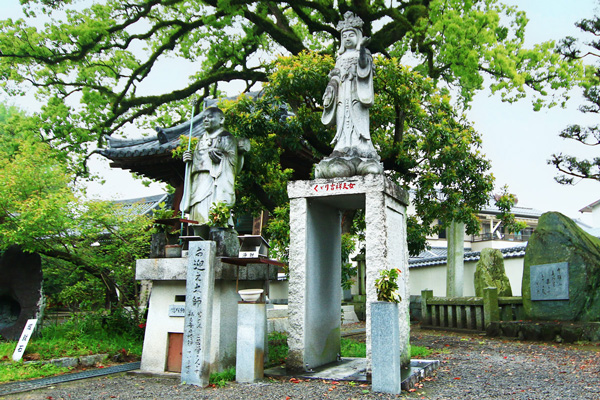The Shikoku Pilgrimage Temple Guide
Temple 63, Kichijōji

Precinct map

History of the temple
Among the pilgrimage temples, Kichijōji is the only temple whose principal image is Bishamonten (Vaishravana). Let us trace its history.
It is said that Kobo Daishi made a pilgrimage to this area during the Konin era (814-824). During his pilgrimage, Daishi found a glowing cypress tree and sensed that the area was filled with spiritual energy, so he founded the temple. Then he carved and enshrined a statue of Bishamonten as the principal image. He also carved statues of Kichijo Tenzo (Auspicious Celestial Maiden) and Zennishi Doji from the same sacred tree to help people pray for relief from poverty and suffering.
At that time, the temple was located on Mt. Sakamoto, southeast of the present site. It is said that the temple had as many as 21 pagodas in a large temple area. However, in 1585 the entire temple was burnt down in a battle during an invasion of Shikoku by Toyotomi Hideyoshi. In 1659 the temple was merged with its branch temple, Hinokiji, and rebuilt at its current location.
There is a statue of Maria Kannon Bosatsu (not open to the public) among the temple's treasures. The statue is about 30 cm tall and made of beautiful pure white Kōrai ware. The origin of the statue is interesting. The captain of an Spanish ship that was shipwrecked off the coast of Tosa (Kochi) gave this statue to Chosokabe Motochika. Since Motochika had never heard of the Virgin Mary, the statue was passed down from generation to generation as a beautiful Kannon Bosatsu (Bodhisattva Who Hears the Sounds of the World) and escaped the Tokugawa Shogunate's ban on Christianity. The temple also preserves a set of screens called “The Twelve Heavenly Folding Screens" from the Kamakura period (1185-1333) and Three Images of Amida Nyorai (Buddha of Limitless Light and Life) from the Muromachi period (1336-1573).
Highlights
Kuguri KichijoTennyo
To the right of a welcoming-looking statue of Kobo Daishi is a statue of Kichijo Tennyo (Goddess of Beauty), the consort of Bishamonten. (Bishamonten is the principal image of the temple.) This statue lends its name to the common name of the temple, Kichijoji. Kichijo Tennyo is revered as a diety who removes all kinds of poverty and brings great wealth. It is said that if you pass under the statue, you will receive a blessing. It is popularly known as Kuguri Kichijo Tennyo (Passing Under Kichijo Tennyo). Her graceful pose is especially memorable.
Jyojuishi (stone for accomplishment)
This is a one-meter-high stone located to the right of the ablution fountain where you wash your hands and rinse your mouth before reciting the sutras. There is a hole about 30-40 cm in diameter in the center of the stone. It is said that if you put a kongo tsue (pilgrim’s walking stick) through the hole, your wish will be granted.
Bishamonten
Bishamonten, or Tamonten, is one of the four heavenly kings, the one who presides over the north. He is believed to be the Buddha of worldly benefits.

Annual Events
| January 3 | Bishamonten Hatsueshiki (Goma Fire Ritual) |
| Lunar calendar April 8 | Hana Matsuri (Buddha's Birthday) |
Details
Names: Mikkyōzan, Taizōin, Kichijōji
Denomination: Toji Shingon Sect
Principal Image: Bishamonten
Founder: Kobo Daishi
Founded: Kounin era (810-824)
Access
Address: 1048, Himi-otsu, Saijo City, Ehime 793-0072
Phone: 0897-57-8863
Parking: None (Paid parking is available nearby.)
Lodging: None
Official website: None
Instagram: kichijoji63_official
